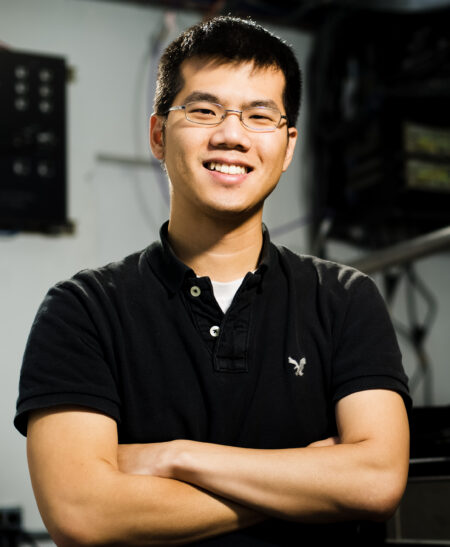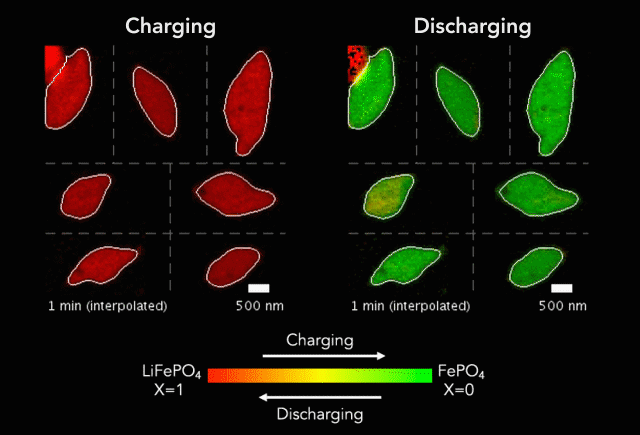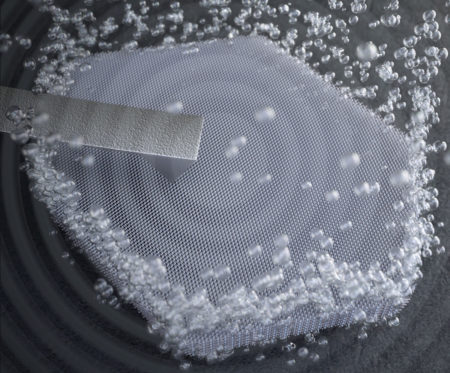 Will Chueh, an associate professor of materials science and engineering at Stanford University, is the 2023 winner of the David A. Shirley award for Outstanding Scientific Achievement at the Advanced Light Source (ALS). His selection, by members of the ALS Users’ Executive Committee (UEC), recognizes Chueh’s deep contributions to operando soft x-ray spectromicroscopy for imaging electrochemical redox phenomena.
Will Chueh, an associate professor of materials science and engineering at Stanford University, is the 2023 winner of the David A. Shirley award for Outstanding Scientific Achievement at the Advanced Light Source (ALS). His selection, by members of the ALS Users’ Executive Committee (UEC), recognizes Chueh’s deep contributions to operando soft x-ray spectromicroscopy for imaging electrochemical redox phenomena.
“It’s a great recognition of the work that my group has done at the ALS,” said Chueh. “It also recognizes the collaborators, especially the beamline scientists at the ALS that I’ve had the pleasure of working with. I’m deeply honored.”
Winners of the Shirley Award are invited by the UEC to address a plenary session of the ALS User Meeting. This year, Chueh’s talk, “Dynamic Electrochemical Phenomena at the Mesoscale,” can be viewed both online and in person on Tuesday, September 12, at 10:35 am PDT. Registration for the User Meeting is free, and the last day to register is this Friday, September 1, 2023.
Chueh’s work is driven by the challenges of climate change and energy sustainability. “Addressing these challenges is very much existential,” he said. “My group and our collaborators are passionate about science and technology that can improve sustainability, especially with regard to energy storage and conversion.” Materials science, he says, is well situated for this task, at the intersection of fundamental chemistry and physics, on one hand, and their application to the processes involved in energy transformation on the other.
“Will’s operando images and movies for battery and electrocatalytic reactions are revising materials science and electrochemistry theories at the fundamental level,” said Jianwei (John) Miao, a professor of astronomy and physics at UCLA who nominated Chueh for the award. “The large body of results on LiFePO4 led the field to understand the complexity of ‘collective phenomena’ in electrochemistry, where many particles in an ensemble interact with one another. Prior to his work, most electrochemical theories assumed a single-particle picture.”


“Let me be clear by saying that Will’s research sits at the forefront of multiple fields,” said David Shapiro, leader of the ALS Microscopy program. “He is a recognized leader in the x-ray microscopy community for the development of synchrotron-based methods for the study of phase transformations in battery materials, and he is a recognized leader among materials scientists studying redox active materials generally. I cannot express strongly enough the profound impact Will’s work has had on the ALS and the broader scientific community.”
Chueh’s achievements have also gone beyond the confines of the laboratory to have technological and commercial impact. In 2021, he started a company called Mitra Chem, with the goal of manufacturing sustainable materials for lithium-ion batteries based in part on results and insights derived from microscopy measurements at the ALS. This month, General Motors announced a $60 million investment in the start-up with the goal of incorporating Mitra Chem’s products into future electric vehicles.
“There’s a strong connection between fundamental insights from these exquisite measurements and impacts on sustainability,” said Chueh. “We’re going from measuring a nanogram of material at the ALS to manufacturing a kiloton of material to go into millions of electric vehicles.”
Another major development for Chueh is the application of artificial intelligence (AI). Microscopy images, and especially movies, contain a lot of data—gigabytes upon gigabytes of it. In a forthcoming paper using data collected nine years ago at the ALS, Chueh and his colleagues extracted new insights by analyzing it using a type of machine learning called computer vision. “We are good at collecting data, but our analysis usually falls behind,” said Chueh. “We’re going to see a real renaissance of applying these data-driven methods to get much more out of the data.”
Especially with the ALS Upgrade, researchers are going to collect more data, at higher resolution, in shorter time frames, underscoring the importance of automating data analysis and using data-driven methods to maximize the benefits. “That’s where microscopy is going in the future: microscopy plus AI, as folks in the transmission electron microscopy community have already been doing for some time,” said Chueh. “This is reaching critical mass at an interdisciplinary place like the ALS.”

In the long term, Chueh is optimistic about the future and our ability to use science to find sustainable solutions to our energy challenges.
“We are now in a golden era where academic discoveries, innovations, technology, development, and deployment are forming a closed loop,” said Chueh. “And it starts right here, at national labs and universities.”
The Shirley Award is named after David Shirley, a professor of chemistry at UC Berkeley and director of Berkeley Lab from 1980 to 1989, whose vision was instrumental in building the ALS. Recipients of the award are selected by members of the ALS UEC, with input from ALS staff members representing the Recognition Task Force of the ALS Inclusion, Diversity, Equity, & Accountability (IDEA) Committee.